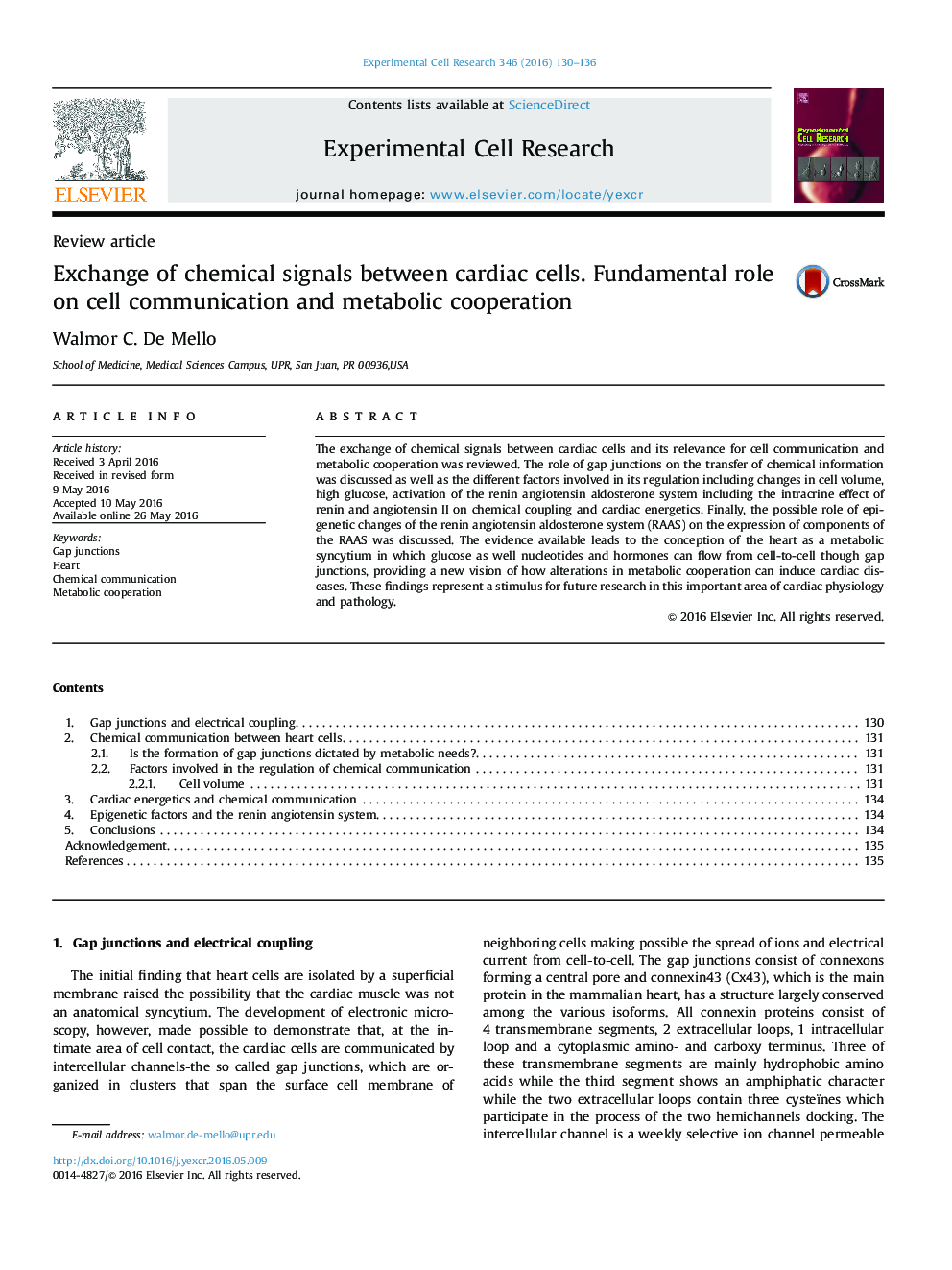| Article ID | Journal | Published Year | Pages | File Type |
|---|---|---|---|---|
| 2129947 | Experimental Cell Research | 2016 | 7 Pages |
•Gap junctions and the intercellular flow of molecules.•Factors involved on the regulation of chemical communication.•The heart as metabolic syncytium.•The role of the renin angiotensin aldosterone system.•On the possible role of epigenetic factors.
The exchange of chemical signals between cardiac cells and its relevance for cell communication and metabolic cooperation was reviewed. The role of gap junctions on the transfer of chemical information was discussed as well as the different factors involved in its regulation including changes in cell volume, high glucose, activation of the renin angiotensin aldosterone system including the intracrine effect of renin and angiotensin II on chemical coupling and cardiac energetics. Finally, the possible role of epigenetic changes of the renin angiotensin aldosterone system (RAAS) on the expression of components of the RAAS was discussed. The evidence available leads to the conception of the heart as a metabolic syncytium in which glucose as well nucleotides and hormones can flow from cell-to-cell though gap junctions, providing a new vision of how alterations in metabolic cooperation can induce cardiac diseases. These findings represent a stimulus for future research in this important area of cardiac physiology and pathology.
